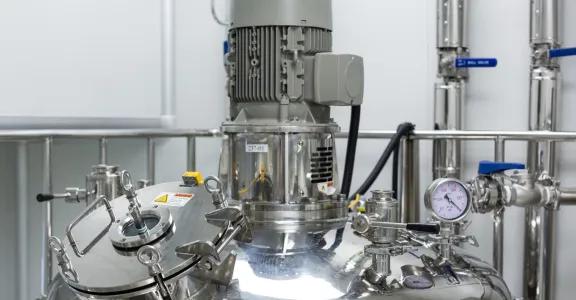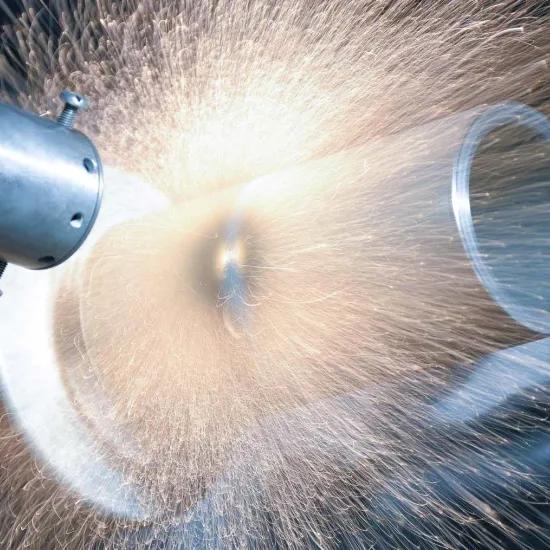Balanced consideration of impact on production and use phases
Remanufacturing, refurbishing, reconditioning, and repurposing products or parts - collectively referred to as 'ReX' - can significantly reduce material and energy consumption during manufacturing. In some instances, savings can surpass 80 percent when compared to the production of new products. This often results in a similar reduction in the operating costs or 'total cost of ownership' for the product. However, does this hold true for products that consume energy during their usage phase? It is true that technology does not stand still, leading products to become more energy-efficient across successive generations. We conducted an analysis to explore this further.
ReX strategies can differ in the extent to which:
In this article, we use the term 'remanufacturing' as a representative example for convenience. This is because the alternative term, 'ReX', has not yet gained widespread recognition. |
In a business-to-business setting, many products consume energy during their operational phase. Examples include production machinery, drives and motors, pumps, transportation and logistics systems, heating and cooling units, lighting, and various electrical appliances.
As a starting point, we studied the core data and life cycle assessments (LCA) of several such products (both our own analyses and found in literature), based on the following questions:
- How is their environmental impact distributed across life stages?
- What is the evolution of their energy efficiency and consumption over the years?
- How much lower is the lifecycle impact of remanufacturing compared to producing a completely new product?
Next, we drew up a representative profile of a 'typical' energy-consuming product (see Figure 1). The use phase accounts for almost 90 per cent of the total life cycle impact, remanufacturing uses 80 per cent less material and 60 per cent less energy than new production, and relative energy efficiency increases from 80 per cent to 100 per cent over five decades (reference basis is the current version).
We then created a model that calculates the total lifecycle impact for the (second) lifecycle of a remanufactured product as a function of its age (and associated energy efficiency), compared to a new product (see Figure 2).
Our findings indicate that while remanufacturing older products results in environmental benefits during the production phase, such as reduced material and energy use, these advantages are often negated by the products' lower energy efficiency and a corresponding higher energy consumption during the use phase. In this specific instance, remanufacturing devices that are 20 years old or older have a higher environmental impact. Since it is largely about energy consumption, this is also likely to be reflected in a higher economic operating cost (total cost of ownership).
Influence of intensity of use
Case closed? Not quite. How does this picture change depending on the intensity of use of the product? It can be expected that the use phase weighs less if a product is used less intensively. For example, an electric motor can be used 'continuously' (e.g. a conveyor belt in industrial production) or only sporadically (e.g. an automated gate). Figure 3 shows that for this product, at lower use intensities, the maximum age (for which the life cycle impact and TCO of remanufacturing are lower) moves from 10 to 30 years (use intensity 50 per cent) or even 50 years (use intensity 10 per cent).
Impact of electricity mix / Share of low-carbon energy
Case closed? Not at all. In the above calculations, we assumed the current energy mix / carbon intensity of electricity in Belgium. What is the effect if the share of renewable energy is higher, e.g. as in Norway (with a 60 per cent lower environmental impact than Belgium)? In this case, we see that remanufacturing is becoming increasingly interesting (for this case) and has the lowest environmental impact/life cycle cost for almost all combinations of age and use intensity. Or how renewable energy supports the inner circles of the circular economy!
Case closed? You can see where this is going ... There might be additional underlying assumptions or key parameters that affect the environmental and economic outcomes of remanufacturing versus producing new energy-consuming products. For instance, one strategy we're considering is upgrading (remanufacturing) old appliances to enhance their energy efficiency and/or extend their lifespan.
Conclusion
For energy-consuming products, the environmental and cost benefits of remanufacturing in the production phase (less material and energy) for older products are at some point offset by the lower energy efficiency and corresponding higher energy consumption in the use phase. The crucial question is: from what age does it become more beneficial to replace an old product with a new one? The answer varies significantly, depending on the specific circumstances and basic assumptions. Therefore, it's crucial to carefully examine both explicit and implicit assumptions in your specific situation.
Remanufacturing: would it work for your business?Reuse, repair, upgrade ... Remanufacturing is just one of the possibilities. How can you be sure you are using the most appropriate strategy for your business? With the COOCK project 'CIRKEL - Remanufacturing as a lever for value creation in a circular manufacturing industry', supported by VLAIO, Sirris gives you the practical tools you need to mitigate the risks and increase the chances of success. This is how you can get started
|










